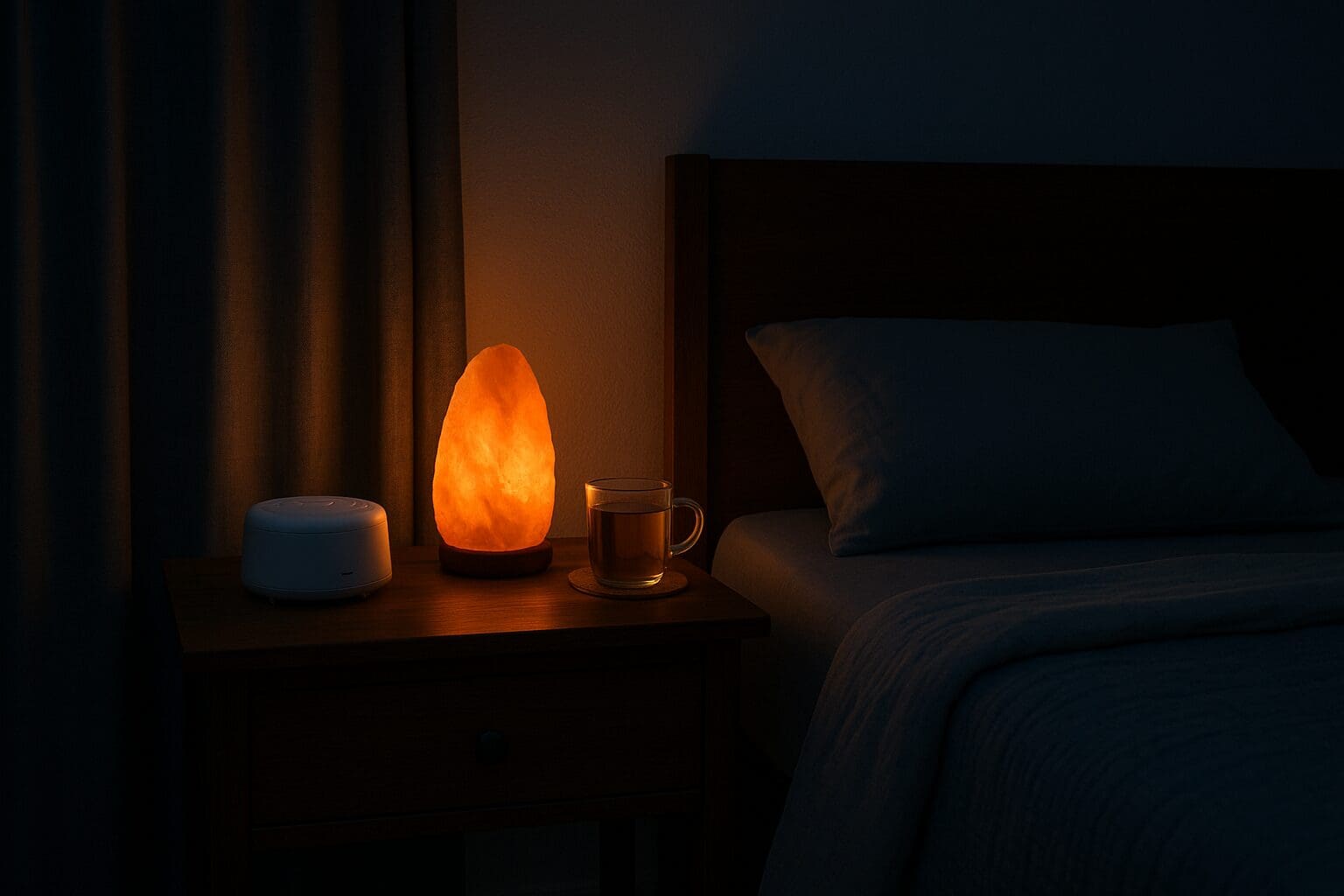The journey through menopause is deeply personal and physiologically complex, especially when thyroid issues are involved. Women who are already navigating hormonal changes from menopause may find themselves facing additional complications, such as thyroid-related hot flashes that can intensify both in frequency and discomfort. If you’ve ever wondered how to stop thyroid hot flashes without compromising your health or relying solely on medications, this comprehensive guide offers research-backed insights, natural strategies, and practical tools for managing this dual hormonal challenge. Understanding the intricate relationship between your thyroid function and menopausal symptoms is the first step toward achieving balance and long-term relief.
You may also like: The Essential Guide to Choosing the Right Diet for Menopause: What Every Woman Should Know

Understanding the Interplay Between Menopause and Thyroid Health
Menopause signals the gradual decline of estrogen and progesterone, which play critical roles in regulating mood, temperature, sleep, and overall well-being. However, these hormonal shifts do not occur in isolation. The thyroid gland, responsible for metabolic and thermoregulatory processes, is often caught in this hormonal crossfire. For women already diagnosed with thyroid conditions like hypothyroidism or hyperthyroidism, menopause can exacerbate existing symptoms or even mask new ones. It’s not uncommon for thyroid hot flashes to be misidentified as solely menopausal, delaying effective treatment.
Furthermore, estrogen influences the sensitivity of tissues to thyroid hormones. As estrogen levels drop, this sensitivity can change, impacting how the body uses thyroid hormones and potentially leading to fluctuations in temperature regulation. This may help explain why some women experience sudden, intense heat followed by chills—commonly referred to as hot and cold flashes. These aren’t just uncomfortable—they’re biochemical signals from your body indicating deeper imbalances that need to be addressed holistically.
What Do Thyroid-Related Hot Flashes Feel Like and Why Are They Worse at Night?
Unlike regular menopausal hot flashes, thyroid-induced hot flashes may feel more erratic and harder to predict. Women report a sudden onset of internal heat radiating from the chest or face, sometimes accompanied by heart palpitations, anxiety, and visible sweating. These episodes can be especially disruptive at night, leading to insomnia, night sweats, and daytime fatigue. The phenomenon of hot flashes at night—also known as nocturnal hyperhidrosis—is a particularly distressing symptom, robbing women of restorative sleep and compounding hormonal stress.
There are several theories as to why hot flashes worsen at night. One is the natural dip in cortisol and thyroid-stimulating hormone (TSH) that occurs in the late evening, which may leave the body more vulnerable to thermoregulatory disruptions. Another is the decline in melatonin, a hormone that also influences body temperature and circadian rhythm. When the body’s internal thermostat becomes erratic due to hormonal changes, especially involving the thyroid, the result is a cascade of sleep disturbances, mood swings, and decreased quality of life.

How to Stop Thyroid Hot Flashes Safely and Effectively with Lifestyle Adjustments
Addressing thyroid hot flashes begins with understanding their root cause. If thyroid dysfunction is confirmed through lab tests such as TSH, free T3, and free T4, then your treatment should include addressing both the thyroid condition and the hormonal imbalances caused by menopause. In many cases, a combination of medication and lifestyle changes offers the most sustainable relief. For women who are wary of relying exclusively on pharmaceuticals, incorporating lifestyle-based interventions can be a powerful adjunct or even primary strategy.
One of the most effective non-pharmacological approaches is temperature control. Wearing breathable cotton fabrics, keeping your bedroom cool, and using cooling pillows can make a tangible difference in managing hot flashes at night. Incorporating daily moderate exercise can also improve thermoregulation and stabilize mood. Activities like walking, swimming, or yoga not only help balance hormones but also improve thyroid function by reducing inflammation and optimizing metabolism.
Stress management is another key factor in how to stop thyroid hot flashes safely. Chronic stress elevates cortisol levels, which can suppress thyroid hormone production and worsen menopausal symptoms. Mindfulness practices such as deep breathing, progressive muscle relaxation, and guided meditation can significantly reduce stress-related hormonal imbalances. These practices also support sleep hygiene, making them particularly useful for addressing hot flashes during the night.

Dietary Strategies for Reducing Hot Flashes and Supporting Thyroid Function
Nutritional choices play an integral role in managing thyroid hot flashes and overall menopausal health. A diet rich in phytoestrogens—plant-based compounds that mimic estrogen—can help alleviate hot flash symptoms. Foods like flaxseeds, soybeans, lentils, and chickpeas are known to offer hormonal balance through gentle, natural mechanisms. These dietary additions may not offer instant relief, but over time they contribute to a more stable hormonal environment.
Iodine, selenium, and zinc are three minerals essential for thyroid health. Seaweed, Brazil nuts, and pumpkin seeds can be incorporated into meals to support thyroid hormone production and conversion. Inadequate intake of these nutrients can exacerbate both thyroid dysfunction and the severity of hot flashes. Omega-3 fatty acids from sources such as wild-caught salmon, walnuts, and chia seeds also play a crucial role by reducing inflammation and improving cellular sensitivity to hormones.
Hydration is another often-overlooked aspect of hot flash treatment. Dehydration can make hot flashes feel more intense and contribute to symptoms like dizziness and fatigue. Drinking at least 8 to 10 glasses of water daily, and avoiding caffeine and alcohol, especially in the evening, can reduce the likelihood of experiencing hot flashes at night. Herbal teas such as sage, black cohosh, and red clover have been used traditionally as hot flash remedies and may offer mild relief when consumed consistently.
How to Stop Thyroid Hot Flashes with Natural and Home Remedies
Many women turn to home remedies for hot flashes when seeking a gentler, more holistic path to relief. Essential oils such as peppermint and lavender have been shown to provide soothing effects when applied topically or diffused in the air. While not a replacement for medical intervention, these remedies offer an added layer of comfort and emotional support, especially during particularly intense episodes.
Acupuncture is another option that has gained traction for hot flash relief. Studies suggest that acupuncture can help regulate the hypothalamic-pituitary-thyroid axis, which plays a crucial role in both menopausal and thyroid function. Regular acupuncture sessions may reduce the frequency and intensity of hot flashes, particularly those that occur in the middle of the night or upon waking.
Herbal supplements like ashwagandha and maca root are also popular for their adaptogenic properties. These herbs help the body respond more resiliently to stress, a known trigger for thyroid and menopausal symptoms. However, it’s essential to consult a healthcare provider before starting any supplement, as some herbs may interact with thyroid medication or have side effects of their own.
How Long Do Hot Sweats Last and When to Seek Medical Attention
For many women, one of the most frustrating aspects of dealing with hot flashes is the uncertainty surrounding their duration. How long do hot sweats last? The answer varies widely. On average, hot flashes can persist for 7 to 10 years, with some women experiencing them for even longer, particularly if thyroid dysfunction is present. The severity, frequency, and duration of hot flashes can fluctuate based on lifestyle, stress levels, and the effectiveness of treatment strategies employed.
Persistent or severe hot flashes, particularly those that interfere with daily life or sleep, warrant medical attention. It’s important to rule out other causes such as hyperthyroidism, autoimmune conditions, or even rare forms of cancer that may mimic hot flash symptoms. A comprehensive evaluation including blood panels, imaging studies, and symptom tracking can help create a clearer diagnostic picture and inform your treatment plan.
When considering medication for hot flashes, options include hormone replacement therapy (HRT), selective serotonin reuptake inhibitors (SSRIs), and gabapentin. Each of these medications has its benefits and risks, and they must be chosen based on individual needs and underlying health conditions. For women with thyroid disease, medication must be managed especially carefully, as certain treatments can affect thyroid hormone absorption or interaction.

How to Reduce Hot Flashes Through Exercise, Movement, and Mindfulness
Physical activity does more than sculpt the body—it regulates hormones, reduces inflammation, and enhances mental well-being, all of which contribute to a decrease in hot flash severity. Engaging in consistent, moderate exercise helps stabilize both estrogen and thyroid hormones, making it a foundational element in any hot flash treatment plan. Cardiovascular activities like cycling, brisk walking, or swimming are particularly effective at promoting endorphin release, which has a natural cooling and calming effect on the body.
Mind-body practices such as tai chi and yoga not only enhance physical flexibility but also improve parasympathetic nervous system regulation. This system governs rest, digestion, and thermoregulation—functions that are often disrupted during menopause. When practiced consistently, these exercises reduce the physiological reactivity that underlies hot flash episodes and offer long-term resilience against their recurrence.
Breathwork, or conscious breathing, can be employed as an on-the-spot tool for hot flash relief. Techniques such as the 4-7-8 method or alternate nostril breathing activate the vagus nerve and modulate body temperature. These practices are especially helpful when hot flashes strike during periods of heightened stress or in the middle of the night. Creating a daily mindfulness routine that incorporates breathing exercises, movement, and intention setting can reduce the overall frequency of both menopausal and thyroid hot flashes.
How to Deal with Hot Flashes During Period and Perimenopause
The onset of hot flashes during period transitions—especially during perimenopause—is often the first sign that the hormonal landscape is shifting. Women may notice that hot flashes on period days are more intense or unpredictable, often layered with emotional changes like irritability or tearfulness. These episodes are not just physically taxing—they can erode self-confidence and disrupt relationships, especially when they occur in social or professional settings.
Perimenopause introduces an added layer of complexity because hormone levels are in flux. Estrogen levels may surge one week and plummet the next, creating a rollercoaster of symptoms. During this time, tracking your symptoms in a journal can help identify triggers and patterns that may be influencing your hot flashes. Keeping tabs on diet, stress, sleep, and menstrual changes can help guide both you and your healthcare provider toward the most effective solutions.
There are several options for managing hot flashes during your period, including the use of bioidentical hormones, seed cycling, and acupuncture. Nutritional support during this stage is also vital. Consuming complex carbohydrates, healthy fats, and protein with every meal helps maintain blood sugar stability, which can mitigate hormonal swings and the intensity of hot flashes. Staying well-hydrated and avoiding inflammatory foods like processed sugar and alcohol further supports hormonal harmony during this transitional stage.

How to Stop Thyroid Hot Flashes Fast and Naturally When They Strike
When thyroid hot flashes strike suddenly, especially in public or high-pressure situations, having a quick-response strategy can make a significant difference. Learning how to stop hot flashes fast naturally involves both proactive and reactive techniques. Keeping a small personal fan, ice water, or cooling spray on hand can provide immediate relief. Some women find relief by placing cold compresses on pulse points such as the wrists or back of the neck, which helps cool the body quickly.
Aromatherapy can also provide rapid relief. Essential oils like eucalyptus or peppermint have cooling properties and can be applied to the temples or inhaled for immediate soothing effects. Practicing grounding exercises—such as pressing your feet into the floor or holding a cold object—can also help reset the nervous system and interrupt the cascade of symptoms associated with a hot flash.
For those experiencing frequent, intense hot flashes, it may be helpful to explore neurofeedback or biofeedback therapies. These emerging modalities teach the brain to regulate physiological responses, potentially reducing the intensity of hot flashes over time. While not yet mainstream, these techniques represent an exciting frontier in hot flash relief and deserve consideration, especially for women seeking non-pharmaceutical solutions.
Why Hot Flashes Persist After Menopause and How to End Them
While many expect that hot flashes will cease once menstruation ends, the reality for a significant number of women is that hot flashes after menopause can persist for years. This extended experience is often due to the lingering effects of estrogen withdrawal, but in women with thyroid conditions, these episodes may continue due to ongoing metabolic and thermoregulatory disruptions. In some cases, what appears to be a continuation of menopausal symptoms is actually a sign of untreated or improperly managed thyroid imbalance.
Ending hot flashes after menopause requires a dual-pronged approach that supports both hormonal and thyroid health. For women not using hormone replacement therapy, addressing adrenal function becomes especially important. The adrenal glands produce small amounts of estrogen precursors and help manage stress responses. When the adrenals are fatigued, the body becomes less capable of maintaining thermal stability, increasing the risk of hot flashes. Adaptogens such as rhodiola, licorice root, and schisandra may help restore adrenal resilience.
It’s also critical to ensure that thyroid medication, if prescribed, is correctly dosed and taken at the same time daily. Variations in dosage or timing can cause fluctuations in thyroid hormone levels, leading to unpredictable symptoms including hot flashes. Women should also be mindful of how their diet, supplements, and other medications interact with thyroid treatments. For example, calcium and iron supplements can interfere with thyroid hormone absorption and should be taken several hours apart from thyroid medication.
What Causes Hot Flashes and the Role of the Hypothalamus
To fully understand how to relieve hot flashes, it’s essential to explore the brain’s role—specifically the hypothalamus, which functions as the body’s thermostat. During menopause, declining estrogen levels affect how the hypothalamus interprets body temperature, leading to inappropriate activation of cooling mechanisms such as sweating and vasodilation. This response results in the hallmark hot flash symptoms: sudden heat, sweating, and sometimes a chill that follows.
Thyroid dysfunction can further disrupt this process. Hyperthyroidism increases metabolic rate and body heat, potentially leading to more frequent or intense hot flashes. On the other hand, hypothyroidism can make the body more temperature-sensitive, triggering hot flashes when there’s even a slight shift in environmental or internal conditions. This explains why some women may experience hot and cold flashes in quick succession.
Because the hypothalamus also regulates circadian rhythm, disruptions in sleep cycles can make hot flashes worse. Poor sleep increases cortisol levels, which exacerbates hormonal imbalances. Addressing hypothalamic dysfunction involves supporting sleep hygiene, reducing stress, and using targeted nutrition and supplements like magnesium, B-complex vitamins, and omega-3s to nourish brain health. Over time, these practices may help reset the hypothalamus’s sensitivity and reduce the frequency of hot flashes.
Medication for Hot Flashes: When It’s Necessary and What to Expect
Although many women seek natural alternatives, there are cases when medication for hot flashes is necessary—especially when symptoms are debilitating. The most common pharmaceutical intervention is hormone replacement therapy (HRT), which replenishes declining estrogen levels and can dramatically reduce hot flashes. However, HRT may not be suitable for women with certain health conditions, including some thyroid disorders or a history of hormone-sensitive cancers.
Other medications for hot flashes include antidepressants such as SSRIs and SNRIs, which modulate serotonin and norepinephrine in the brain. These neurotransmitters are involved in temperature regulation, and altering their activity can reduce the intensity and frequency of hot flashes. While not originally designed for menopause management, these medications are increasingly prescribed due to their non-hormonal nature.
Gabapentin and clonidine are additional options for women who do not respond to SSRIs or prefer alternatives to HRT. These medications affect the nervous system and can blunt the body’s thermoregulatory response. However, all medications come with potential side effects, and it’s important to have a thorough discussion with a healthcare provider to weigh the risks and benefits. In women with thyroid conditions, monitoring for interactions and adjusting doses over time is especially important to prevent adverse effects.

How to Relieve Hot Flashes Through Sleep Hygiene and Circadian Support
Sleep disturbances are both a cause and consequence of hot flashes. Creating a sleep environment that supports hormonal stability is essential to finding lasting hot flash relief. Cooling your bedroom to around 65°F, using moisture-wicking bedding, and maintaining a consistent sleep-wake schedule can help reduce nighttime awakenings caused by hot flashes at night.
Circadian rhythm entrainment—aligning your biological clock with natural light-dark cycles—also plays a key role in hormonal balance. Exposure to morning sunlight helps reset melatonin production, which in turn improves sleep quality and reduces the likelihood of night sweats. Avoiding screens and artificial blue light in the evening is equally important, as these interfere with melatonin and can disrupt sleep patterns.
Nutritional strategies can also support sleep and minimize hot flashes. Foods rich in tryptophan—such as turkey, eggs, and nuts—support serotonin production, which is a precursor to melatonin. Incorporating a small, protein-rich snack before bed may stabilize blood sugar and prevent nighttime cortisol spikes that trigger hot flashes. Herbal teas such as chamomile and valerian root offer additional calming effects and may promote deeper, more restorative sleep.
How to Stop Hot Flashes Fast Naturally Without Medication
For women seeking immediate relief, learning how to stop hot flashes fast naturally without medication can be empowering. One of the fastest ways to cool down is through evaporative cooling—placing a cold washcloth on the back of your neck or wrists. This technique triggers the body’s cooling reflex and can quickly bring down core temperature. Some women carry cooling facial mists or small handheld fans for discreet relief during work or social events.
Slow, diaphragmatic breathing has also been shown to reduce hot flash severity. Taking long, slow breaths helps activate the parasympathetic nervous system, shifting the body into a state of calm and counteracting the sympathetic surge that accompanies hot flashes. Practicing this technique for 15 minutes twice a day has been linked to a reduction in hot flash frequency and intensity in clinical studies.
Maintaining a log of your hot flash triggers—whether it’s spicy food, alcohol, caffeine, or emotional stress—can help you avoid situations that exacerbate symptoms. Identifying and minimizing these triggers, combined with mindfulness and quick-response techniques, can empower you to handle hot flashes in real time and regain a sense of control over your body.
What Helps With Hot Flashes: Integrating a Multi-Layered Strategy
When it comes to what helps with hot flashes, no single intervention works for everyone. The most effective approach is one that combines medical insight with holistic lifestyle strategies. Start with foundational elements: get your thyroid checked and optimized, eat a nutrient-dense diet, engage in daily movement, manage stress, and prioritize quality sleep. These cornerstones form the basis for long-term hormonal harmony and symptom control.
Supplementing these basics with natural remedies like herbal teas, adaptogens, and acupuncture can provide additional support. Wearing light, layered clothing and planning around temperature fluctuations also makes daily life more manageable. Over time, these strategies not only reduce symptoms but also improve overall quality of life.
Social and emotional support is another vital, often underestimated factor in managing menopausal symptoms. Joining support groups, working with a menopause-focused health coach, or simply talking openly with friends can reduce feelings of isolation and anxiety. Knowing you’re not alone and having access to shared experiences can make the journey less daunting and more empowering.
How to Minimize Hot Flashes Through Hormonal Balance and Gut Health
The gut and endocrine systems are intricately linked. Gut bacteria influence estrogen metabolism, thyroid hormone conversion, and systemic inflammation—all of which are involved in hot flash development. A healthy gut microbiome helps process and eliminate excess hormones, preventing hormonal dominance that can lead to worsening symptoms. Incorporating probiotic-rich foods like kefir, yogurt, sauerkraut, and kimchi can support this process.
Prebiotic fibers found in foods like garlic, onions, leeks, and bananas feed beneficial bacteria and contribute to gut health. Additionally, reducing sugar and processed foods minimizes inflammatory responses that can disrupt hormone signaling and worsen hot flashes. Fiber also supports detoxification pathways in the liver, which is essential for metabolizing both estrogen and thyroid hormones effectively.
Functional medicine practitioners often recommend comprehensive stool testing to assess gut health in women with persistent hot flashes. These insights can inform personalized nutrition plans that address dysbiosis, inflammation, and nutrient deficiencies. Healing the gut can therefore serve as an indirect but powerful way to minimize hot flashes and enhance overall well-being.
Frequently Asked Questions (FAQ) on How to Stop Thyroid Hot Flashes and Navigate Hormonal Heat Surges
1. How to Stop Thyroid Hot Flashes with Lifestyle Shifts Beyond Diet Alone?
Addressing how to stop thyroid hot flashes requires a broader approach than dietary changes. One often-overlooked factor is thermal regulation through structured layering and breathable fabrics. Lightweight, moisture-wicking clothing and temperature-adaptive bedding can drastically reduce the severity of hot and cold flashes. Another strategy involves paced respiration—deep, slow breathing practiced for 15 minutes twice daily—which has shown clinical benefits in lowering core body temperature during sudden hormonal shifts. Incorporating consistent, gentle movement such as restorative yoga can also regulate the autonomic nervous system, helping to reduce sympathetic overdrive that contributes to hot flashes. These lifestyle upgrades enhance the effectiveness of hot flash remedies by targeting environmental and physiological triggers together.
2. Why Are Hot Flashes Worse at Night and How Can You Minimize Their Impact?
Understanding why are hot flashes worse at night is key to long-term symptom management. Circadian rhythm fluctuations cause hormonal instability to peak during early morning hours, intensifying hot flashes at night. Dim-light melatonin onset also clashes with low estrogen states, disrupting sleep. Mitigation involves cooling technology like mattress chill pads and white noise machines that maintain ambient stability. Moreover, consuming anti-inflammatory teas—such as sage or spearmint—before bedtime can provide hot flash relief by calming thermoregulatory chaos. Mind-body interventions like progressive muscle relaxation and guided imagery are powerful tools to counteract nighttime autonomic surges and restore restful sleep.
3. What Helps with Hot Flashes That Start During Your Menstrual Cycle?
When examining hot flashes on period symptoms, hormone fluctuation—especially declining progesterone—is a prime culprit. What helps with hot flashes during period shifts is tracking basal temperature and cycle patterns to anticipate onset. Magnesium glycinate supplementation has been linked to decreased intensity of hot flashes during period phases due to its calming effects on the hypothalamus. Applying cool compresses to the neck and chest during flare-ups also provides immediate hot flash relief. Unlike traditional hot flash medicine, these approaches work with the cycle’s rhythm rather than masking symptoms pharmacologically.
4. Can Emotional Triggers Worsen Hot Flashes and How Should They Be Managed?
Yes, emotional states significantly affect how to deal with hot flashes. Elevated cortisol levels from anxiety or stress amplify the frequency of hot sweats. This explains why hot and cold flashes often coincide with emotionally charged periods. Techniques like biofeedback and mindfulness-based stress reduction not only calm the mind but also provide a physiological reset. Practicing gratitude journaling and setting micro-goals can build emotional resilience that buffers the body’s stress response. For those seeking hot flashes natural treatment methods, emotional regulation may be just as important as hormonal balancing.
5. What’s the Difference Between Hot Flashes After Menopause and During Perimenopause?
Hot flashes after menopause often stem from long-term estrogen depletion and less adaptive thermoregulatory responses. In contrast, hot flashes during perimenopause are more erratic due to hormonal volatility. The body’s sweat response becomes less sensitive post-menopause, making these hot flashes more intense and persistent. Hot flash treatment in postmenopausal women may require layered interventions—like combining hot flash medicine with acupuncture or hormone modulation. Meanwhile, hot flashes natural treatment techniques may work more effectively in the transitional perimenopausal phase due to greater hormonal responsiveness.
6. How to Stop Hot Flashes Fast Naturally Without Resorting to Pharmaceuticals?
If you’re wondering how to stop hot flashes fast naturally, start by focusing on internal cooling strategies. A sudden hot flash can be halted using paced breathwork—inhale for 4 seconds, hold for 7, exhale for 8—activating parasympathetic balance. Cold packs applied to pressure points like wrists and behind the knees can reduce core temperature. Herbal remedies like black cohosh and red clover are respected in the realm of hot flash remedies, though effectiveness may vary. Avoiding triggers like caffeine and alcohol also supports how to stop hot flashes fast by preventing sudden thermogenic surges.
7. Which Home Remedies for Hot Flashes Are Backed by Clinical Insight?
Among the most effective home remedies for hot flashes are dietary flaxseed, omega-3s, and phytoestrogen-rich foods like soy. These support estrogen receptor modulation without the risks associated with traditional meds for hot flashes. Another underused tool is foot soaking in cold water before bed, which helps dissipate heat from the body’s core. Incorporating adaptogenic herbs like ashwagandha and holy basil offers systemic balance and supports thyroid-adrenal synergy. These holistic methods offer hot flash relief while promoting overall hormonal harmony.
8. How Long Do Hot Sweats Last and Can Duration Be Shortened?
How long do hot sweats last depends on hormonal history, genetic predisposition, and thyroid function. On average, individual episodes range from 30 seconds to five minutes, but frequency may span years if not addressed. Combining behavioral therapy with a personalized hot flash treatment plan can cut both duration and frequency. Interventions like acupuncture or transdermal magnesium applications have shown promise in reducing the longevity of symptoms. Being proactive early in your symptoms can make a significant difference in how to end hot flashes before they become chronic.
9. What Medication for Hot Flashes Works When Natural Methods Don’t?
When non-pharmacological methods fail, medication for hot flashes becomes a valuable option. SSRIs like paroxetine and SNRIs such as venlafaxine are FDA-approved hot flash medicine that modulate serotonin’s role in thermoregulation. Gabapentin and clonidine are non-hormonal alternatives that aid in nocturnal hot flash relief. However, every medication for hot flashes must be evaluated against potential side effects like fatigue or dizziness. It’s crucial to use meds for hot flashes under the supervision of a healthcare provider, especially when managing thyroid-related symptoms.
10. How to Stop Thyroid Hot Flashes When Hormone Therapy Isn’t an Option?
For patients who cannot use hormone replacement, learning how to stop thyroid hot flashes means targeting root metabolic imbalances. Nutrient deficiencies—especially in selenium, zinc, and vitamin D—can exacerbate hot flash severity in thyroid disorders. Incorporating adaptogens and cold hydrotherapy may help recalibrate the hypothalamic-pituitary-thyroid axis. Practicing time-restricted eating helps regulate insulin and cortisol, which are closely tied to heat surges. Finally, tracking symptoms with wearable tech enables personalized pattern recognition, creating a proactive roadmap for how to reduce hot flashes naturally and sustainably.
Conclusion: Reclaiming Comfort and Confidence by Mastering How to Stop Thyroid Hot Flashes
The road to relief from thyroid-related hot flashes can be long, but it is navigable with the right knowledge, tools, and support systems. Understanding how to stop thyroid hot flashes requires a multifaceted approach—one that honors the complexities of both menopausal and thyroid health. Rather than relying on a single solution, combining dietary shifts, lifestyle enhancements, natural therapies, and medical insights offers the best chance for lasting change.
From nighttime disruptions to sudden daytime sweats, these symptoms can feel overwhelming. But with patience, informed decision-making, and personalized care, women can regain their comfort, restore hormonal equilibrium, and rediscover confidence in their bodies. Whether you choose home remedies for hot flashes, medication, or an integrative path, your body will respond best when it’s supported holistically.
As you move forward in managing menopause, remember that relief is possible—and so is empowerment. There is no one-size-fits-all solution, but by embracing a combination of strategies tailored to your individual needs, you can effectively minimize, relieve, and ultimately stop thyroid hot flashes. By prioritizing hormonal harmony, nurturing your thyroid, and tending to your body’s signals with compassion and intelligence, you pave the way for a vibrant and resilient future.
Further Reading:
Natural Remedies for Hot Flashes (Without Hormones)
27 Ways to Manage Hot Flashes: From Natural Remedies to Medicine



